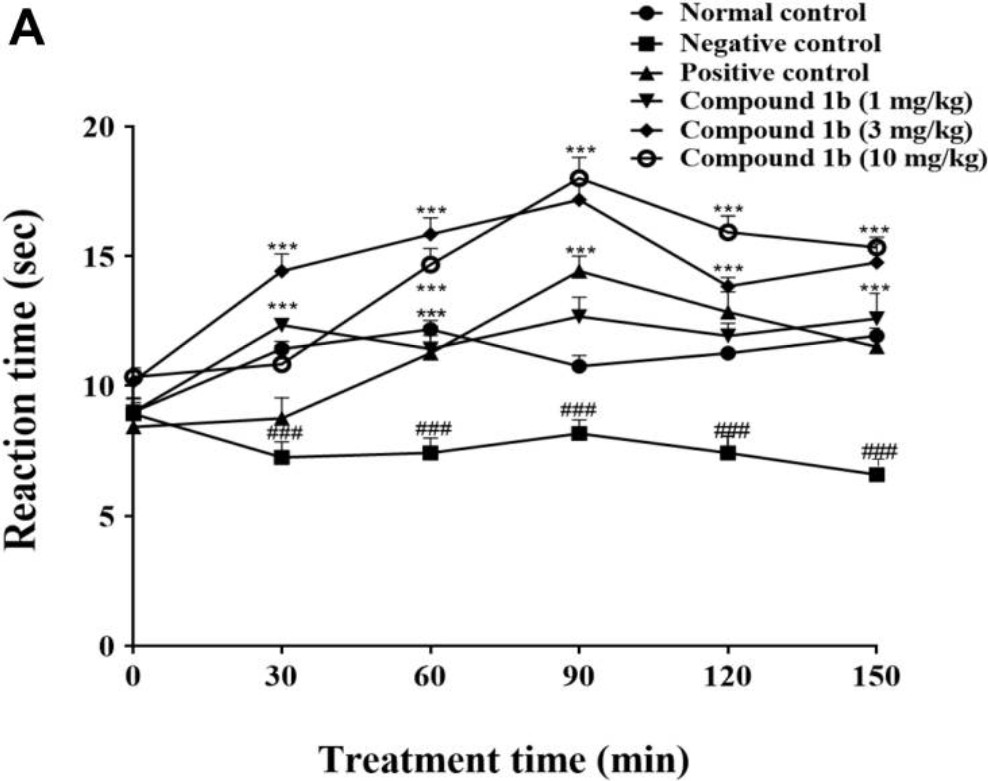Carrageenan-Induced Inflammatory Pain Model
Creative Bioarray has meticulously developed the carrageenan-induced inflammatory pain model for preclinical research, a testament to our commitment to excellence in the field. This model is highly regarded for its precise simulation of acute inflammatory pain in animals, offering an invaluable asset for delving into the intricacies of pain mechanisms and evaluating the effectiveness of prospective analgesic agents. Our clients can rest assured that by choosing our services, they are partnering with a team that prioritizes accuracy, consistency, and cutting-edge scientific advancements, making Creative Bioarray the preferred choice for their preclinical research needs.
Carrageenan is a versatile compound that exists in three primary forms: iota, kappa, and lambda. Among these, the lambda variant is particularly noteworthy for its application in preclinical research, where it is frequently employed to induce acute inflammatory responses in animal models. This is attributed to its distinctive property of adopting a gel-like state at room temperature, which, upon injection, triggers the development of thermal hyperalgesia—a condition characterized by an increased sensitivity to pain. The onset of this pain response typically reaches its zenith on the third day and at the fourth hour following administration, respectively, and can endure for up to 96 hours.
Our Carrageenan-Induced Inflammatory Pain Model
- Available Animal
- Mouse
- Rat
- Modeling Method
Carrageenan is injected subcutaneously into the plantar surface of the hind paw to induce inflammatory pain.
- Endpoints
- Clinical observation
- Behavioral tests: Von Frey test, Hot plate test, etc.
- Paw thickness
- qPCR or Western blot
- Histology analysis
- Other customized endpoints
Example Data
 Fig.1 Effects of thiazolidine derivatives on carrageenan-induced thermal hyperalgesia. (Malik et al. 2021)
Fig.1 Effects of thiazolidine derivatives on carrageenan-induced thermal hyperalgesia. (Malik et al. 2021)
Meanwhile, we also provide other inflammatory pain models that maybe you are interested in:
- Formalin-Induced Inflammatory Pain Model
- Complete Freund's Adjuvant (CFA)-Induced Inflammatory Pain Model
- Capsaicin-Induced Inflammatory Pain Model
Quotation and Ordering
Creative Bioarray boasts a team of scientists with profound therapeutic expertise and extensive experience in developing and validating disease models. We commit to offering our clients the most dependable services at the most competitive prices. If you are interested in our services, please feel free to contact us at any time or submit an inquiry to us directly.
References
- Malik, Z., et al. Thiazolidine Derivatives Attenuate Carrageenan-Induced Inflammatory Pain in Mice. Drug Des Devel Ther. 2021; 15:369-384.
- Yam, M.F., et al. Overview of Neurological Mechanism of Pain Profile Used for Animal "Pain-Like" Behavioral Study with Proposed Analgesic Pathways. Int J Mol Sci. 2020;21(12):4355.
For research use only. Not for any other purpose.
Disease Models
- Oncology Models
-
Inflammation & Autoimmune Disease Models
- Rheumatoid Arthritis Models
- Glomerulonephritis Models
- Multiple Sclerosis (MS) Models
- Ocular Inflammation Models
- Sjögren's Syndrome Model
- LPS-induced Acute Lung Injury Model
- Peritonitis Models
- Passive Cutaneous Anaphylaxis Model
- Delayed-Type Hypersensitivity (DTH) Models
- Inflammatory Bowel Disease Models
- Systemic Lupus Erythematosus Animal Models
- Oral Mucositis Model
- Asthma Model
- Sepsis Model
- Psoriasis Model
- Atopic Dermatitis (AD) Model
- Scleroderma Model
- Gouty Arthritis Model
- Carrageenan-Induced Air Pouch Synovitis Model
- Carrageenan-Induced Paw Edema Model
- Experimental Autoimmune Myasthenia Gravis (EAMG) Model
- Graft-versus-host Disease (GvHD) Models
-
Cardiovascular Disease Models
- Surgical Models
- Animal Models of Hypertension
- Venous Thrombosis Model
- Atherosclerosis model
- Cardiac Arrhythmia Model
- Hyperlipoidemia Model
- Doxorubicin-induced Heart Failure Model
- Isoproterenol-induced Heart Failure Model
- Arterial Thrombosis Model
- Pulmonary Arterial Hypertension (PAH) Models
- Heart Failure with Preserved Ejection Fraction (HFpEF) Model
-
Neurological Disease Models
- Alzheimer's Disease Modeling and Assays
- Seizure Models
- Parkinson's Disease Models
- Ischemic Stroke Models
- Acute Spinal Cord Injury (ASCI) Model
- Traumatic Brain Injury (TBI) Model
- Hypoxic-Ischemic Encephalopathy (HIE) Model
- Tourette Syndrome (TS) Model
- Amyotrophic Lateral Sclerosis (ALS) Model
- Huntington's Disease (HD) Model
- Intracerebral hemorrhage (ICH) Models
- Schizophrenia Model
- Pain Models
-
Metabolic Disease Models
- Type 1 Diabetes Mellitus Model
- Type 2 Diabetes Mellitus Model
- Animal Model of Hyperuricemia
-
Nonalcoholic Fatty Liver Disease Model
- High-Fat Diet-Induced Nonalcoholic Fatty Liver Disease (NAFLD) Model
- Methionine and Choline Deficient (MCD) Diet-Induced Nonalcoholic Fatty Liver Disease (NAFLD) Model
- Gubra-Amylin NASH (GAN) Diet-Induced Nonalcoholic Fatty Liver Disease (NAFLD) Model
- Streptozotocin (STZ) Induced Nonalcoholic Fatty Liver Disease (NAFLD) Model
- High Fat Diet-Induced Obesity Model
- Diabetic Foot Ulcer (DFU) Model
- Liver Disease Models
- Rare Disease Models
- Respiratory Disease Models
- Digestive Disease Models
-
Urology Disease Models
- Cisplatin-induced Nephrotoxicity Model
- Unilateral Ureteral Obstruction Model
- 5/6 Nephrectomy Model
- Renal Ischemia-Reperfusion Injury (RIRI) Model
- Diabetic Nephropathy (DN) Models
- Passive Heymann Nephritis (PHN) Model
- Adenine-Induced Chronic Kidney Disease (CKD) Model
- Kidney Stone Model
- Doxorubicin-Induced Nephropathy Model
- Orthotopic Kidney Transplantation Model
- Orthopedic Disease Models
- Ocular Disease Models
- Skin Disease Models
- Infectious Disease Models
- Otology Disease Models